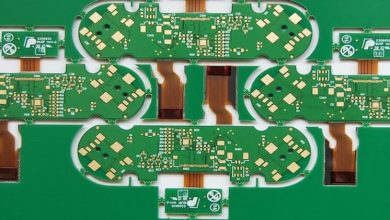NGFW Open Source Advantages

Using a Network Next Generation Firewall (NGFW) is a great way to protect your organization’s network against malware, viruses, and other threats. The NGFW uses cloud-based integration, behavioral analytics, and other techniques to block attacks and protect your network. But how can you tell which NGFW is best for your company?
Authentication techniques
A next-generation firewall (NGFW) is an essential tool in the fight against cyber threats. It acts as an intelligent barrier between user devices. They can also monitor network applications and enforce various security policies. To this end, most modern solutions sit between layers three and four of the OSI model.
Next-generation firewalls like NGFW open source are made up of a host of features, but one, in particular, deserves a closer look. The NGFW has a long list of capabilities, including application control, deep packet inspection, and intrusion prevention. These technologies can be combined with other network security systems, such as anti-virus and IPS, to create a comprehensive security solution.
One of the most important capabilities is authentication. Authentication is crucial in allowing the NGFW to recognize known identities on devices and apply network policies. Authentication is a multi-step process, starting with a switch submitting an EAPoL identity request to a host system. Once the authentication is complete, a corresponding one-time password is generated. This feature is not limited to traditional LANs and WANs, as it can be used to authenticate mobile and remote users.
Behavioral analytics
The name of the NGFW is akin to that of blackjack, but the halo has been replaced with a shiny new set of pixels, ahem. There is a myriad of open-source and proprietary solutions out there, and some of the better ones will be buried in the bowels, as mentioned above. NGFWs can securely handle modern-day cyberattacks, that is. Despite the many hoops to jump through, plenty of enterprise-level security is in a box. Fortunately, the halo, as mentioned above, allows you to take advantage of its features, such as, but not limited to, network, cloud, and mobile capabilities. Please visit for more updates: Ifvod Tv
Malware detection
Next-Generation Firewalls (NGFW) use several tools to detect malware. Some of the tools include signature-based detection, anomaly-based detection, and behavioral analysis.
Signature-based detection systems analyze all traffic and compare it to a signature database. They are prone to false negatives. However, they also can catch known threats.
Anomaly-based detection uses a classification system that is run by machine learning. The algorithm compares network activity against a set of predefined patterns. These are likely to be the same as those used by known attackers. This makes the system more effective in detecting unknown and sophisticated threats.
NGFWs can help to detect ransomware, backdoors, and other malicious software. Malware can damage network infrastructure, resulting in unauthorized out-of-network access.
NGFWs can also help to block and identify malware that isn’t detected by traditional anti-virus solutions. Often, new and more sophisticated malware can slip by anti-virus products.
Spam protection
NGFW (Next Generation Firewall) can help if you’re looking for effective spam protection. This type of firewall offers an additional layer of protection to your network and is also one of the most popular options available.
It is a network security device that performs deeper inspection than the typical second-generation firewall. The device can identify incoming traffic and block authorized network access. In addition to blocking unauthorized networks, next-generation firewalls offer deeper awareness of individual applications.
Next-generation firewalls are an excellent option for business owners. Unlike traditional firewalls, NGFWs can perform more thorough inspections of packets and evade more sophisticated attacks. They can also provide decentralized control over unsolicited messages.
NGFWs are designed to reduce the complexity and cost of managing multiple security products. They also make it easier to customize security policies.
Cloud integration
Next-Generation Firewalls (NGFWs) are powerful security tools that deliver various benefits. These include increased network visibility, improved traffic inspection, and security intelligence. Aside from the apparent benefit of security, these technologies can enable the integration of dynamic applications.
NGFWs also allows users to identify attacks with minimal effort. For example, a next-generation firewall may use a signature-based intrusion prevention system to monitor a device’s or user’s activities. In addition, it may use allowlists to allow legitimate business traffic or a behavior-based detection method to identify malicious traffic.
Another advantage is the centralized management capabilities that most NGFWs provide. These centralized capabilities reduce the human resources needed to manage all of the NGFWs on a network. This is especially important for businesses that need to integrate multiple cloud platforms.
Unified Threat Management (UTM)
Unified threat management (UTM) is a concept that simplifies security management and protects all users. It combines a range of security functions in a single appliance and allows you to scan and filter all data entering and leaving your network.
UTMs allow you to easily monitor your security architecture, identify negative events and respond to them in real time. Unified threat management can save you money and reduce the complexity of managing your network. However, they only sometimes have all of the features and capabilities of dedicated NGFW products.
When it comes to a unified threat management solution, you should choose one that can integrate new security technologies as they become available. For example, consider including a cloud log server to capture data from other endpoints. You can also use a SIEM (an on-premises SIEM) to collect and ingest log messages.
UTM solutions have many benefits, including faster detection and response times, simplified network management, and a decreased total cost of ownership. These benefits are precious for smaller to midsize companies.




